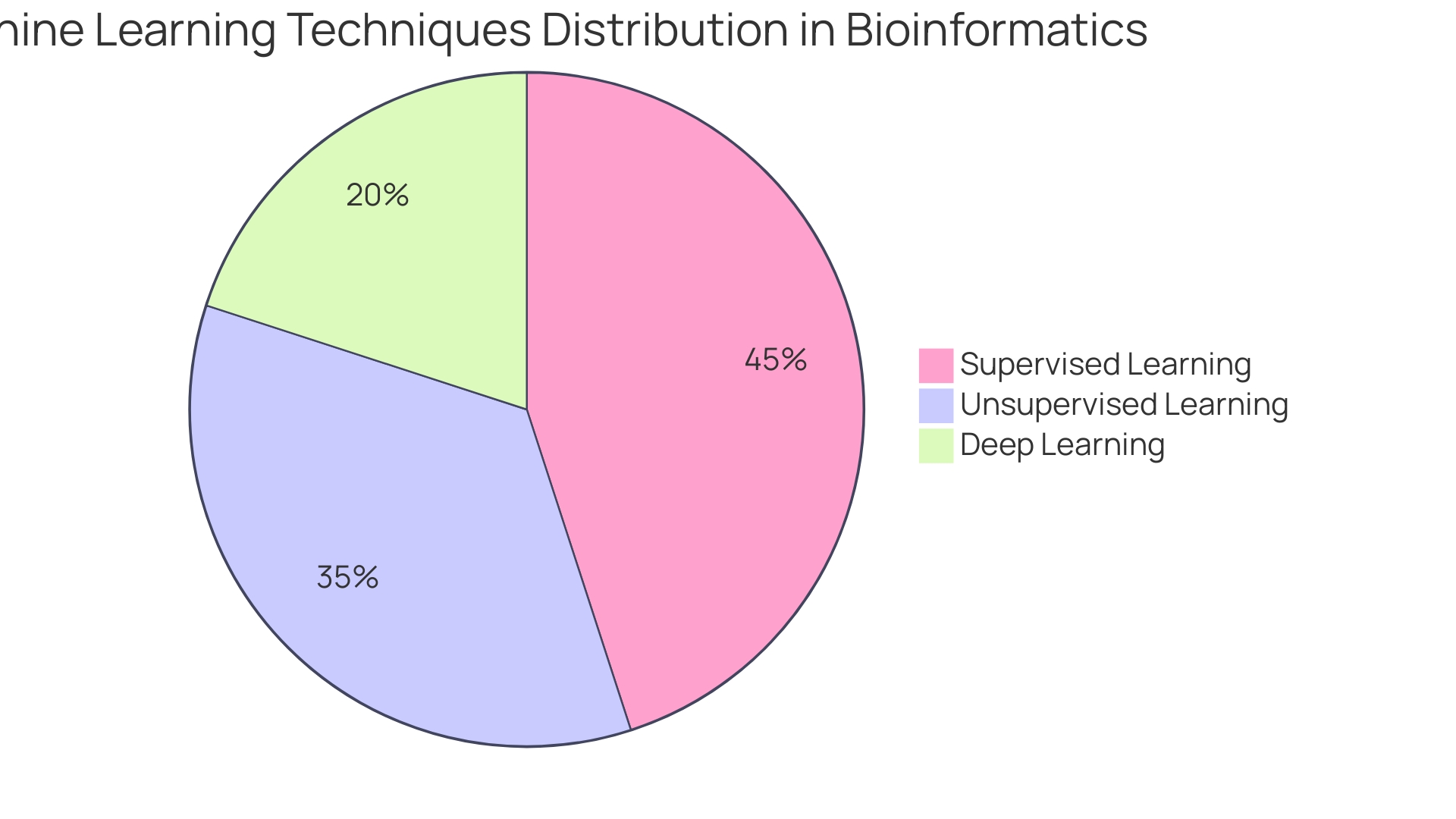Introduction
Advanced analytics, particularly AI, is revolutionizing the field of bioinformatics by enabling a more nuanced understanding of genomic data. In this article, we will explore the applications of AI in bioinformatics and how it is transforming the way researchers uncover intricate patterns and variations in genomic datasets.
We will also delve into the machine learning techniques used for bioinformatics data analysis and discuss the challenges and future directions in AI-driven bioinformatics. Join us as we explore the exciting intersection of AI and bioinformatics, where cutting-edge technology is paving the way for personalized medicine and more effective disease management.
Applications of AI in Bioinformatics
Advanced analytics, particularly AI, is revolutionizing the field of bioinformatics by enabling a more nuanced understanding of genomic data. By leveraging AI-based algorithms, researchers can delve into the vast genomic datasets to uncover intricate patterns and variations. These algorithms are akin to sophisticated tools that decipher the complex 'book' of the human genome, which not only contains the heritable information passed down from our parents but also the subtle differences that make each individual unique.
Through AI, it's possible to pinpoint specific mutations and potential markers for diseases, facilitating a more targeted approach to understanding the genetic underpinnings of health conditions. This work is particularly critical as it moves beyond broad strokes to focus on the cellular level, where many health-related anomalies begin. Such AI-powered insights are vital for advancing personalized medicine, where treatment can be tailored to the individual's genetic profile, ultimately leading to more effective disease management and therapies.
Machine Learning Techniques for Bioinformatics Data Analysis
Advanced analytics, particularly machine learning, has become indispensable in the field of bioinformatics, where it's leveraged to extract meaningful insights from complex datasets. Supervised learning models like random forests and support vector machines are adept at classification tasks.
They can discern protein functions or pinpoint specific disease subtypes, which is pivotal for personalized medicine. On the other hand, unsupervised learning approaches, including clustering and dimensionality reduction techniques, are instrumental in unveiling hidden patterns and associations within voluminous data.
Deep learning, with its convolutional and recurrent neural networks, excels in interpreting medical images and predicting biological sequences, further pushing the boundaries of diagnostic and therapeutic strategies. However, amidst this surge of data-driven discovery, it's vital to remember the words of caution from industry experts: not all published data and methods are inherently accurate or mistake-free. Rigorous validation and accuracy checks are essential to avoid the propagation of errors and to ensure that the applications of these powerful machine learning tools stand on a solid foundation of reliability.

Challenges and Future Directions in AI-Driven Bioinformatics
Artificial Intelligence (AI) is revolutionizing bioinformatics by enabling us to decipher the intricate 'book' of the human genome. As researchers strive to understand individual variances and their connections to tissue molecular composition, especially in disease states, AI is proving invaluable.
The creation of algorithms capable of reading and interpreting DNA—the heritable code passed down from our ancestors—is a significant focus. These AI-driven algorithms are meticulously designed to detect and comprehend the nuances in our DNA, pinpointing the differences that matter.
With a push towards examining the phenomena at the single-cell level, where many health-related issues originate, Ai's pattern recognition capabilities are crucial. However, the journey is not without its obstacles. The quest for high-quality, varied datasets to train these sophisticated models remains a challenge, as does making the Ai's decision-making process transparent and understandable. Despite these hurdles, the field is making strides with emerging AI methodologies like explainable AI and transfer learning, which promise to further illuminate the path of AI-enhanced bioinformatics research.
Conclusion
AI is revolutionizing bioinformatics by enabling a deeper understanding of genomic data. It uncovers patterns and variations, leading to personalized medicine and effective disease management.
Machine learning techniques like supervised and unsupervised learning play a vital role in analyzing complex datasets, while deep learning excels in interpreting medical images and predicting biological sequences. Challenges exist in obtaining high-quality datasets and ensuring the accuracy of published data and methods.
Transparency in AI decision-making is crucial. Despite these obstacles, emerging AI methodologies like explainable AI and transfer learning show promise for enhancing bioinformatics research. In summary, AI transforms bioinformatics by providing insights into genomic data, enabling personalized medicine, and advancing disease management. With continued development of machine learning techniques, the future of AI-driven bioinformatics holds promise for improving healthcare outcomes.





